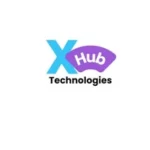
The digital marketing funnel is one of the most powerful concepts in online marketing. It’s a strategic framework that outlines the journey a potential customer takes from first discovering your brand to making a purchase—and ideally, becoming a loyal customer. Understanding this funnel helps businesses create more effective campaigns, build trust with their audience, and drive more conversions.
The funnel is not just about selling; it’s about guiding your audience through a step-by-step process that addresses their needs, concerns, and motivations. Every stage of the funnel requires specific content, messaging, and targeting to move people forward.
The Stages of the Digital Marketing Funnel
The digital marketing funnel is typically divided into several key stages: Awareness, Interest, Consideration, Conversion, Loyalty, and Advocacy. Let’s explore each of these stages in detail.
Awareness Stage
This is the top of the funnel and the first point of contact between your brand and a potential customer. At this stage, people are usually unaware of your brand or may not even realize they have a problem that needs solving.
The goal during the awareness stage is to get noticed. You can do this by creating educational or entertaining content that reaches a broad audience. Social media ads, blog posts, infographics, SEO-driven articles, and viral videos are all effective tools to build brand visibility.
Remember, this stage is not about selling. It’s about introducing your brand and providing value without asking for anything in return.
Interest Stage
Once someone is aware of your brand, the next step is to capture their interest. At this point, users start to explore your content, follow your channels, or subscribe to your newsletter. They want to learn more.
To nurture interest, focus on offering detailed and relevant content. You might create how-to guides, comparison articles, downloadable eBooks, or free webinars. Email marketing campaigns often start here, helping you to stay in touch and deliver value directly to their inbox.
It’s also crucial to build trust at this stage. Show that your brand is knowledgeable, helpful, and understands the needs of your target audience.
Consideration Stage
In the consideration stage, prospects begin evaluating whether your product or service is the right fit for their needs. They compare you to competitors and look for reasons to choose your solution.
Here, it’s important to highlight your unique selling points. Case studies, customer testimonials, product videos, feature breakdowns, and success stories can help tip the scales in your favor.
Retargeting ads and follow-up emails also work well at this stage, reminding users of the benefits of your offering and inviting them to take the next step.
Conversion Stage
This is the bottom of the funnel, where the lead becomes a paying customer. Everything you’ve done in the earlier stages now pays off—literally.
To maximize conversions, your landing pages, checkout process, and CTAs (calls to action) must be clear, persuasive, and easy to use. You may offer a limited-time discount, a money-back guarantee, or a free trial to eliminate friction and hesitation.
Live chat support, social proof, and easy payment options can also boost confidence and improve the chances of conversion.
Loyalty Stage
Many marketers stop at conversion—but the funnel doesn’t end there. After someone buys from you, you have the opportunity to turn them into a repeat customer. This is the loyalty stage.
Happy customers are more likely to buy from you again. To keep them coming back, use post-purchase emails, exclusive member deals, birthday discounts, and personalized recommendations.
Providing excellent customer service is also critical. A loyal customer base is often your most profitable audience.
Advocacy Stage
The final stage of the digital marketing funnel is advocacy. Loyal customers who love your brand will naturally recommend it to others. This is where word-of-mouth, referrals, and user-generated content come into play.
Encourage customers to leave reviews, share their experience on social media, or join an affiliate or referral program. These actions extend your brand’s reach and create new leads at the top of the funnel.
Brand advocates are like your unpaid marketing team—and their impact can be huge.
Why the Funnel Approach Works
The digital marketing funnel works because it aligns your marketing efforts with the psychology of the buyer. Rather than pushing for a sale from the first interaction, you gradually nurture leads through a natural journey.
This method respects the customer’s decision-making process and builds trust over time. It also helps marketers create more targeted content, use their ad budgets wisely, and measure performance at every stage.
How to Build a Successful Digital Marketing Funnel
Creating a digital marketing funnel requires both strategy and the right tools. Here are the key steps to build one:
- Define your audience. Know who you’re targeting, what their problems are, and where they hang out online.
- Map your funnel stages. Decide what kind of content or campaigns you’ll run at each stage.
- Create valuable content. From blog posts to lead magnets to retargeting ads, create content that matches the funnel stage.
- Use automation. Tools like email automation, CRM systems, and retargeting ads can help move people through the funnel.
- Measure and optimize. Track KPIs at every stage—traffic, click-through rates, lead conversions, and sales—to improve performance.
Tools to Help You Build a Funnel
There are plenty of tools available to help you set up and manage your digital marketing funnel:
- Google Analytics for tracking funnel performance
- Mailchimp or ConvertKit for email automation
- ClickFunnels or Leadpages for building landing pages
- Meta Ads Manager or Google Ads for paid campaigns
- Hotjar or Crazy Egg for user behavior insights
These tools can automate parts of the funnel, giving you more time to focus on content, strategy, and customer engagement.
Real-Life Example of a Digital Marketing Funnel
Let’s say you run a fitness coaching business online. Here’s how a basic digital marketing funnel might look:
- Awareness: You run a YouTube channel with workout tips and promote it on social media.
- Interest: Viewers click through to your blog and subscribe to your newsletter for a free 7-day fitness plan.
- Consideration: You send follow-up emails with client testimonials and video lessons about your paid program.
- Conversion: A limited-time offer and a “Book Now” landing page help convert subscribers into paying clients.
- Loyalty: After the program, you send monthly fitness challenges and offer discounts on follow-up coaching.
- Advocacy: You encourage clients to post their fitness results on Instagram and tag your brand, boosting exposure.
This funnel not only drives new sales but also keeps existing customers engaged and referring others.
Final Thoughts
The digital marketing funnel is more than a concept—it’s a roadmap for building meaningful connections with your audience. By understanding each stage and delivering the right message at the right time, you guide people from strangers to loyal customers and even brand advocates.
Whether you’re a startup or a growing brand, a strong digital marketing funnel can be the key to scaling your business, optimizing your ROI, and building lasting relationships in the digital world.













